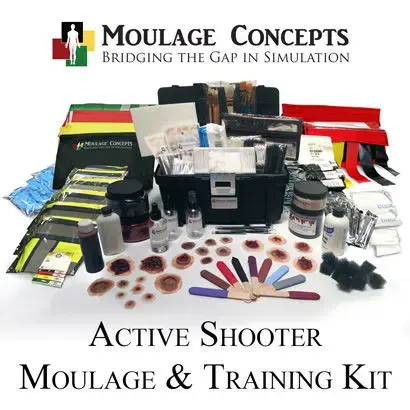What Role Does MCI Training Play in Disaster Preparedness?
- Moulage: A Collabaration of Experts
- Apr 10
- 3 min read
Updated: Apr 11
MCI (Mass Casualty Incident) training is crucial for ensuring emergency responders are prepared for large-scale disasters. In this post, we will explore the various aspects of MCI training and how Moulage contributes to advancing disaster preparedness.
Understanding MCI Training
MCI training focuses on preparing teams for vast emergency scenarios where the number of casualties overwhelms normal healthcare capabilities. By following structured protocols, responders learn to assess, prioritize, and treat patients effectively.
At its core, MCI training is about maximizing efficiency in chaotic situations. During large-scale incidents, time and resources are limited, hence understanding triage and treatment protocols is crucial and immersive moulage assists in solidifying the story.
Furthermore, MCI training empowers responders by placing them in realistic simulations. These exercises cultivate confidence and help individuals navigate the unique challenges they will face during an actual mass casualty incident.
Benefits of MCI Training in Emergency Situations
One of the significant benefits of MCI training is the enhancement of decision-making skills under pressure. Responders are trained to quickly evaluate multiple patients' needs and make swift, informed choices—critical during high-stakes events.
Moreover, group cohesion improves dramatically with MCI training. When participants regularly train together, they develop better communication and teamwork skills. This collaborative approach is essential for optimizing patient care in disasters.
Training scenarios also emphasize the importance of leadership, skill acquisition, and integrated response. Repeated practice helps define roles within the team, ensuring that in times of crisis, everyone knows their responsibilities and can support one another effectively.
Another vital benefit is the familiarity with equipment, triage, and technology used during emergencies. Being proficient with tools ensures that responders can provide high-quality care without delay.
Key Components of Effective MCI Training
Effective MCI training consists of several key components, starting with a strong educational foundation. Participants must thoroughly understand principles like triage, treatment protocols, and transport logistics.
Simulation exercises form another essential aspect. When teams are immersed in lifelike scenarios, they can practice their skills in a controlled environment, identifying the layers of a triage pivot, and providing a hands-on approach making the learning experience memorable and impactful.
Finally, ongoing evaluation and feedback are crucial. By routinely assessing training outcomes, organizations can identify areas for improvement and adapt their programs to meet evolving needs and challenges.
How MCI Training Enhances Coordination Among Responders
Coordination among responders is imperative during a mass casualty situation. MCI training fosters this essential skill by encouraging teamwork and collaboration. Participants practice working together, which enhances their ability to communicate effectively during crises.
Additionally, through training, responders learn the significance of prioritizing tasks and situational awareness. The ability to "read" the scene while caring for the patient enhances the structured approach concepts, building opportunities for teams to practice acting both swiftly and efficiently, ensuring that the most urgent needs are met first.
As a result, knowledge of individual roles and responsibilities grows, solidifying a sense of unity within the team. This enhanced coordination is vital for not only the safety of the responders but also for the well-being of the victims.
Real-World Impact of Moulage in MCI Training
The real-world impact of Mass Casualty Incident (MCI) training cannot be overstated. Agencies that prioritize this training often report higher survival rates during actual mass casualty events, as well-prepared responders can swiftly mobilize resources and address victims’ needs effectively. Incorporating moulage into MCI training further enhances its effectiveness by adding a layer of storytelling and sensory realism, allowing participants to engage with lifelike scenarios that mirror the complexities of real emergencies.
In recent disasters, responders trained in MCI principles and exposed to moulage-based simulations were better equipped to handle overwhelming demands. Immersive Moulage, which involves the creation of realistic injuries and wound responsiveness serves as a powerful tool for triage, developing critical skill sets, and prioritization under pressure.
Wrapping Up
In summary, MCI training plays a vital role in disaster preparedness by equipping first responders with the necessary skills and knowledge to manage mass casualty situations efficiently. Implementing comprehensive MCI training programs solidified with immersive moulage can significantly enhance the overall readiness of emergency response teams.
Call today to learn more about our 360-sensitive approach to bridging the gap in first responder and community training.
Moulage Concepts Inc. Training Leaders for Preparedness
For training you can see, feel, hear, and smell.
(C) 2025 Moulage Concepts Inc.
All Rights Reserved































Comments